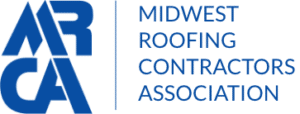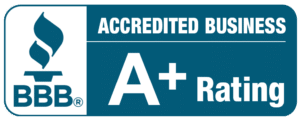Why Winter Preparation Matters
Louisville’s wet and icy winters are hard on roofing. Snow and ice can turn minor leaks into major water damage. Freeze-thaw cycles put stress on roofing materials of all kinds. High winds can take down tree branches, or just clog gutters with their leaves.
Roofs protect our homes, our families, and our belongings. A leak is the last thing any of us want this winter. Luckily, some basic preparation can prevent extensive, expensive repairs. Inspecting your roof and addressing issues promptly will keep your roof in good shape this winter and beyond.
Schedule a Professional Roof Inspection
The best way to identify potential problems, ensure your roof’s longevity, and get peace of mind is to have a professional inspect your roof. Some potential issues aren’t easily visible from the ground or with the untrained eye. However, letting small damages go unfixed can allow them to snowball into something bigger and more expensive to fix. Scheduling a roof inspection with Louisville’s trusted roofing professionals is a worthwhile investment.
By getting up on the surface, a roofer can make a detailed inspection of the roof’s integrity.
Professional roof inspection begins with the surface of the roof, but it doesn’t end there. Interior ceilings with sagging, water damage, mold, or mildew are additional warning signs that a roof needs repair.
A combination of professional roof inspections and DIY seasonal roof maintenance is the best recipe for preserving your roof’s health and avoiding leaks this winter.
Clean and Inspect Gutters & Downspouts
Cleaning the gutters certainly isn’t a task most of us enjoy, but it’s an essential part of winter roof preparation in Louisville. Gutters full of leaves and debris inevitably clog and hold water. During the winter, clogged gutters prevent melting snow from properly draining off the roof. The dangers of clogged gutters include ice dams and ponding water. Ultimately these can cause roof leaks in winter and even structural issues.
If you’re not interested in getting up on a ladder this fall, schedule a professional gutter cleaning. Louisville professionals will ensure your roof is ready for the winter weather before it arrives.
Check for Damaged or Missing Shingles
Louisvillians are accustomed to the temperatures fluctuating. Our roofs? Not so much.
Freeze-thaw cycles are one aspect of winter weather that can exacerbate even minor issues. Water that enters even tiny cracks freezes and expands, causing these cracks to widen. Over the course of the season, what started as a small crevice can grow to something more damaging. Asphalt shingles are a durable choice for Louisville homes, but that doesn’t mean they’re completely maintenance-free. Before the winter weather sets in, take a look up at your roof for any visual indicators of damage. Cracked, ripped, or curling shingles, missing shingles, and accumulated granules are all signs of wear to address for snow and ice damage prevention.
Attic Ventilation & Insulation
While clogged gutters exacerbate ice dams, improper attic ventilation and insulation are often the deeper root cause. Heat loss from the roof causes snow to melt faster in some areas than the ice dams at the eaves. This prevents water from draining off properly. With the ice dam preventing water flow, the water backs up beneath the shingle tabs and into your house, possibly causing major water damage.
In addition to preserving your roof, proper venting and attic insulation also improves your home’s energy efficiency. The U.S. Department of Energy’s Guide to Durable Attics is a useful resource for ensuring your attic is structurally sound, properly insulated, and energy-efficient.
Address Flashing, Sealant, and Chimney Area
Before wet winter weather arrives, it’s a great time to check on common leak spots. Roof flashing is one of the most important roofing components for keeping your home dry, especially in key areas.
Sheet metal flashings prevents leaks in areas where the roof meets another structure, such as an elevation change, a chimney, dormers or skylights. If water gets through these flashings, it’s a leak into the interior of your home. Metal roofing and flashings are crucial to the roofing envelope . Sheet metal is one of the most durable, versatile, and increasingly popular roofing materials for residential and commercial use.
Trim Overhanging Branches & Clear Roof Debris
One important determining factor of roof health isn’t actually a part of the roof at all. Overhanging tree branches can cause damage in more ways than you might realize. Trimming them before winter is a smart move to protect your home.
Strong winds and storms can cause damaged branches to fall and cause structural damage to roofs. Overhanging branches are more likely to break with heavy rain or snowfall. Additionally, overhanging branches that are actually touching the roof can trap moisture and allow mold to grow. Depending on the mold, it can negatively impact your health as well as the structural integrity of your home.
When to Call a Professional
Assessing your roof for issues now is an opportunity to take care of any necessary roof repair before winter. If you identify any of the following signs, reach out to a professional for inspection and repairs right away.
- Interior Leaks or Sagging Ceilings
- Sagging Roofline
- Missing or Damaged Flashing
- Missing or Damaged Shingles
- Missing or Damaged Mortar
Highland roofing has been the top choice for winter roof maintenance in Louisville since 1890. We’re trusted to keep our neighbors and their homes safe and dry all winter long.
Schedule a professional roof inspection with Highland Roofing today to ensure your home is protected before winter weather arrives.






